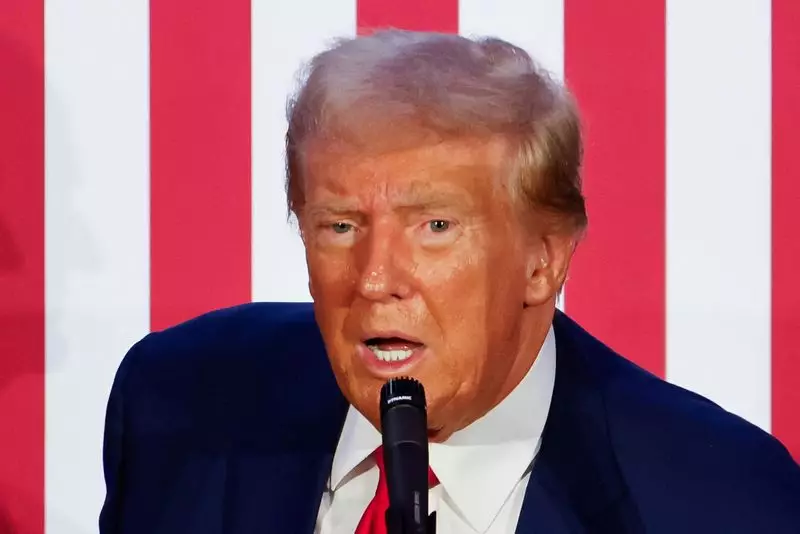As the political atmosphere intensifies with presidential elections around the corner, economic policies come under sharp scrutiny, particularly when proposed by leading candidates. Donald Trump, once again on the Republican ticket, has reignited discussions about imposing aggressive tariffs on imports should he secure a second term. Analysts at Barclays have provided insights into how these proposals could profoundly impact U.S. businesses, specifically those in the S&P 500 index, and the broader economy.
Trump’s latest tariff strategy suggests a range of levies, including a broad 10% to 20% tariff on nearly all foreign imports and an eye-watering 60% on Chinese goods. Advocating for these measures, the former president claims that they are essential for protecting American workers and addressing unfair trading practices by countries like China and those within the European Union. This sentiment echoes Trump’s first term, which was characterized by escalating trade tensions, particularly with Beijing. Although some have hailed the tariffs as a means to promote domestic manufacturing and safeguard jobs, analysts caution against potential economic repercussions.
Barclays’ analysts project that if enacted, the proposed tariffs could lead to a 3.2% reduction in the earnings of S&P 500 companies in the coming year. This potential decline stems from the tariffs’ direct effects, creating additional costs that firms may struggle to absorb fully. Moreover, should countries retaliate with similar tariff measures, the earnings hit could escalate further by an additional 1.5%. While the immediate financial dart may appear minor, the broader implications of sustained high prices and reduced economic growth could yield a significant cumulative impact on these corporations.
Specific sectors are projected to be disproportionately affected by these tariffs. Industries with significant reliance on global supply chains—such as materials, discretionary goods, industrials, technology, and healthcare—are under particular scrutiny. These sectors might experience supply constraints, ultimately resulting in increased costs for consumers. The ramifications extend beyond mere corporate profit margins; they could reverberate through industries and potentially lead to job losses, thereby counteracting the jobs Trump aims to protect.
Beyond the S&P 500, analysts foresee that tariffs could ignite inflationary pressures within the United States. This short-term rise in prices may compel the Federal Reserve to react cautiously. While the Fed has been poised to ease interest rates from their current levels, the prospect of increased inflation might lead them to maintain higher borrowing costs in the interim. As conditions weaken—shaped by trade policy uncertainty and tighter financial environments—it is possible that the Federal Reserve could cut rates more aggressively than anticipated, perhaps by as much as 100 basis points.
As the race for the presidency narrows, national polling indicates a competitive landscape, with Vice President Kamala Harris holding a slight edge against Trump. Regardless of the election outcome, analysts predict that a divided Congress will complicate any new president’s efforts to navigate economic reforms. In such a context, reliance on executive authority—including the ability to set tariffs—becomes more critical for the incoming administration. Presidents often wield significant power through executive orders and regulations, necessitating a deft strategy to implement their economic vision without congressional backing.
Trump’s tariff proposals encapsulate the complexity of balancing protectionist policies with the potential risks to corporate profitability and economic stability. As the political landscape evolves, the repercussions of such policies will likely extend far beyond mere statistics, affecting the livelihood of American workers and the financial health of domestic companies. As stakeholders evaluate these proposals, the interconnected nature of global trade and economic policy presents challenges that necessitate careful consideration by policymakers and analysts alike.

